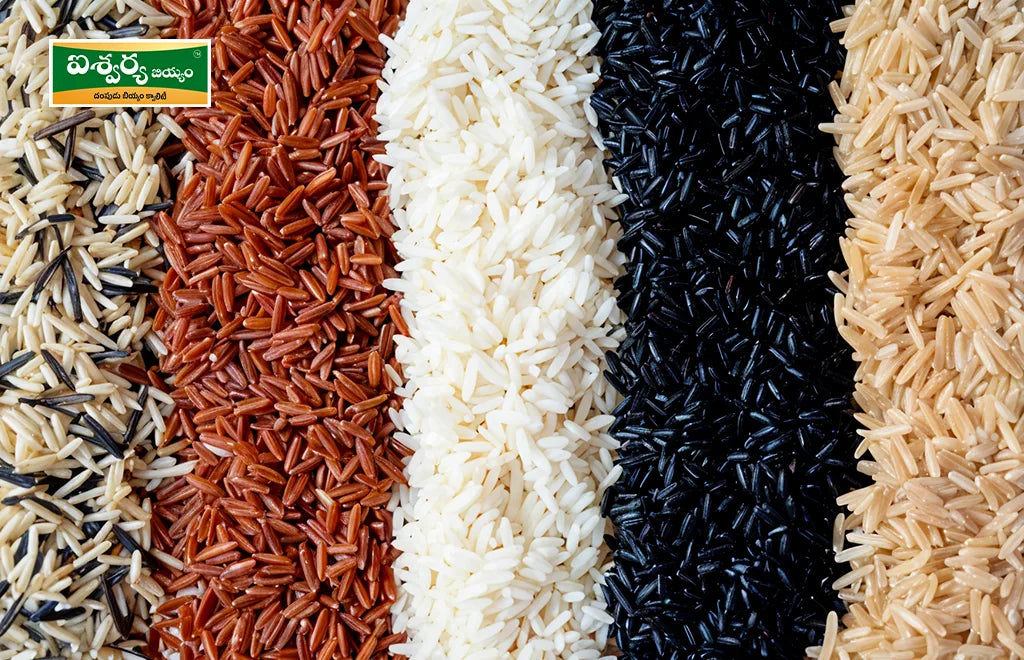
Is Rice Good for Weight Loss? Here’s What you Need to Know
Rice often gets a bad rap when it comes to weight loss. Many believe that cutting it out is a must for shedding pounds, but that's not the whole story. When picked wisely and eaten in the right amounts, rice can fit into a healthy, balanced weight loss plan.
Let’s look closer at how rice fits into a weight loss journey and how you can still enjoy your favorite grain without guilt.
Can you Eat Rice and Still Lose Weight?
Yes, you can. Weight loss isn’t about eliminating specific foods; it’s about maintaining a calorie balance. As long as you're burning more calories than you're consuming, you can still enjoy rice while working toward your goals.
In fact, many cultures where rice is a dietary staple, such as Japan, China, and parts of India, traditionally have lower obesity rates. Studies even suggest that moderate rice consumption is associated with lower body weight, highlighting that how much and what kind of rice you eat matters more than simply whether you eat it.

Which Types of Rice are Best for Weight Loss?
Not all rice is created equal. Some varieties are more nutrient-dense and supportive of weight management than others. Choosing the right type of rice can make a significant difference in how you feel and progress on your weight loss journey.
Brown Rice
Brown rice is a whole grain that retains its natural fiber and nutrients. It digests more slowly, promoting feelings of fullness and helping to stabilize blood sugar levels, both important factors for weight loss.
Black Rice
Rich in fiber and powerful antioxidants called anthocyanins, black rice supports better metabolism and helps reduce fat accumulation. Its strong nutritional profile makes it a great option for a weight-loss-friendly diet.
Red Rice
Thanks to its high fiber content and antioxidant properties, red rice can help curb hunger and support better digestion, making it easier to manage body weight.
Wild Rice
Wild rice, though technically a grass, is low in calories and packed with protein and fiber. These nutrients help keep you full longer and support a healthy weight.

Low GI Rice Varieties
Choosing rice with a low glycaemic index (GI), like hand-pound rice, can support weight loss by promoting steady energy release. Unlike high-GI foods that spike blood sugar and trigger hunger quickly, low-GI rice breaks down slowly, helping control appetite and reduce frequent cravings. Foods with a GI value of 55 or less are classified as Low GI foods, making them ideal for sustained energy and better blood sugar control.
For instance, Aishwarya Low GI Rice is naturally matured and has a glycemic index of just 52, which is lower than standard white rice. It offers a soft, fluffy texture and is also gentler on your blood sugar levels, making it a great choice for anyone looking to manage their weight.
How to Include Rice in a Weight Loss Diet
Here are some simple strategies to enjoy rice while supporting your health goals:
- Watch your Portions: Aim for about 100–150 grams of cooked rice per meal.
- Balance your Plate: Combine rice with lean proteins like grilled chicken, fish, or legumes, and add plenty of fiber-rich vegetables to create a well-rounded meal.
- Choose Whole Grain or Low GI Options: Brown, red, black, wild, or low GI rice varieties provide more fiber and nutrients. Aishwarya Low GI Rice is a great choice for a balanced plate.
- Mind the Cooking Method: Opt for steamed, boiled, or lightly sautéed rice rather than fried or buttery preparations.
- Try Resistant Starch: Cooking and cooling rice before eating can boost resistant starch content, improving gut health and possibly reducing calorie absorption.
Does White Rice Cause Weight Gain?
White rice, while lower in fiber compared to whole grain varieties, doesn’t automatically cause weight gain. Like any food, the key is portion control and overall diet quality. That said, if you’re trying to lose weight, choosing whole grain or low GI varieties may offer added benefits like better blood sugar management and longer-lasting fullness.

Final Thoughts
Rice can fit into a healthy and sustainable weight loss journey. Success depends on selecting the right type of rice, managing portion sizes, and choosing nutritious foods to accompany it.
Opting for whole grain or low-GI varieties such as brown rice, wild rice, black rice, or Aishwarya Low GI Rice lets you enjoy your favorite dishes while helping with your weight management journey. With a GI value of 52, it’s a great choice that offers a delicious texture and is gentle on your blood sugar levels.
Instead of cutting rice out altogether, embrace it wisely and let it be a nourishing part of your balanced, health-focused lifestyle.
Ready to make a healthier choice? Try Aishwarya Low GI Rice today and see how easy it is to include this nutritious grain in your weight management plan!
